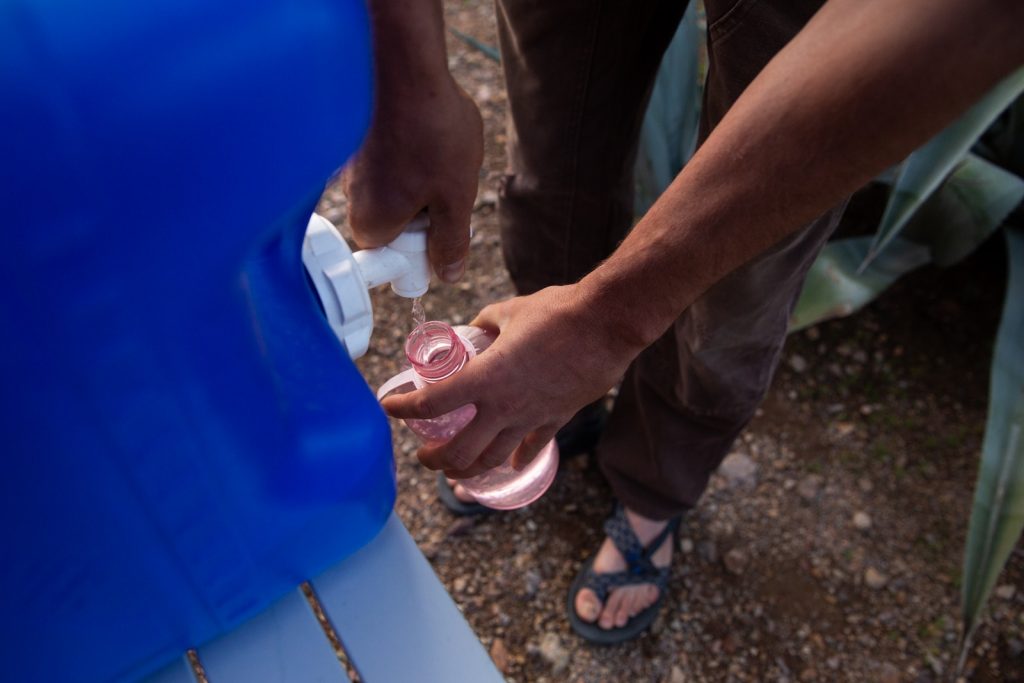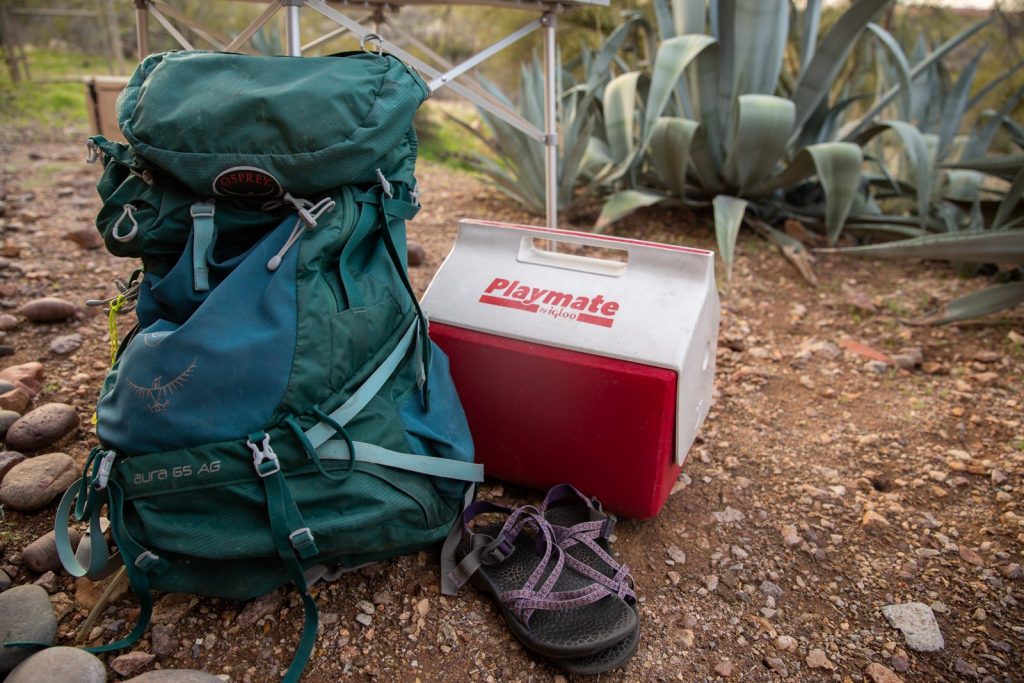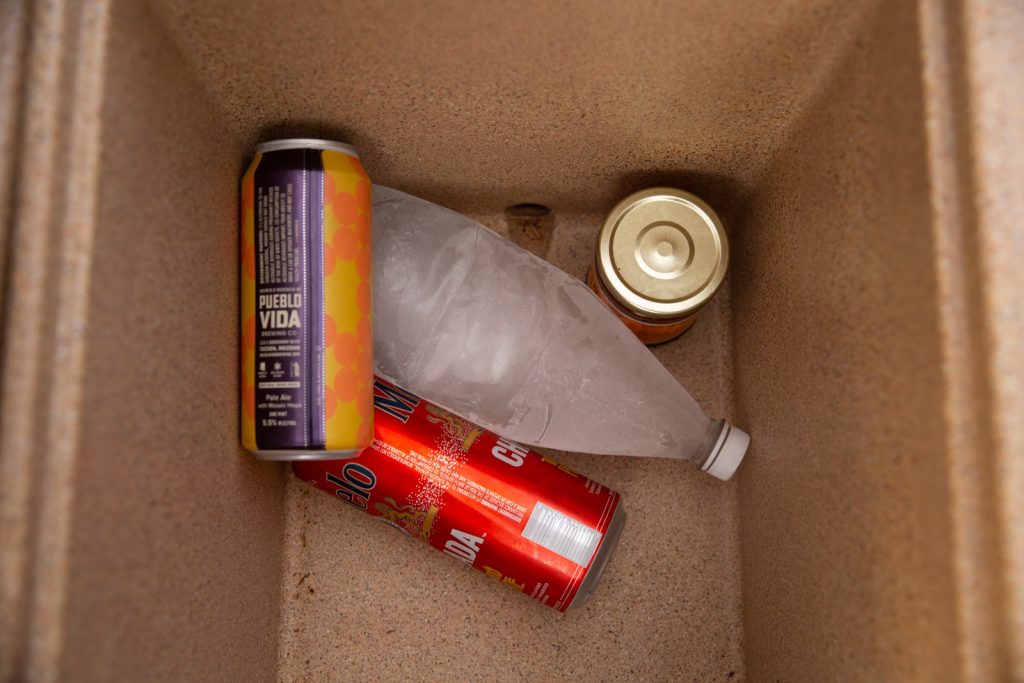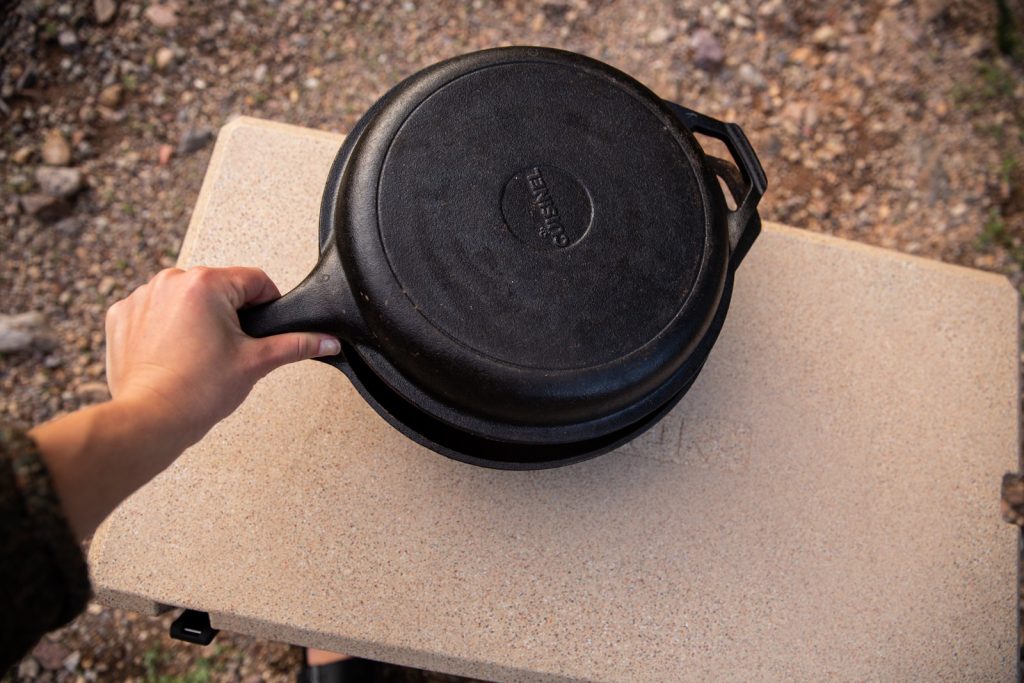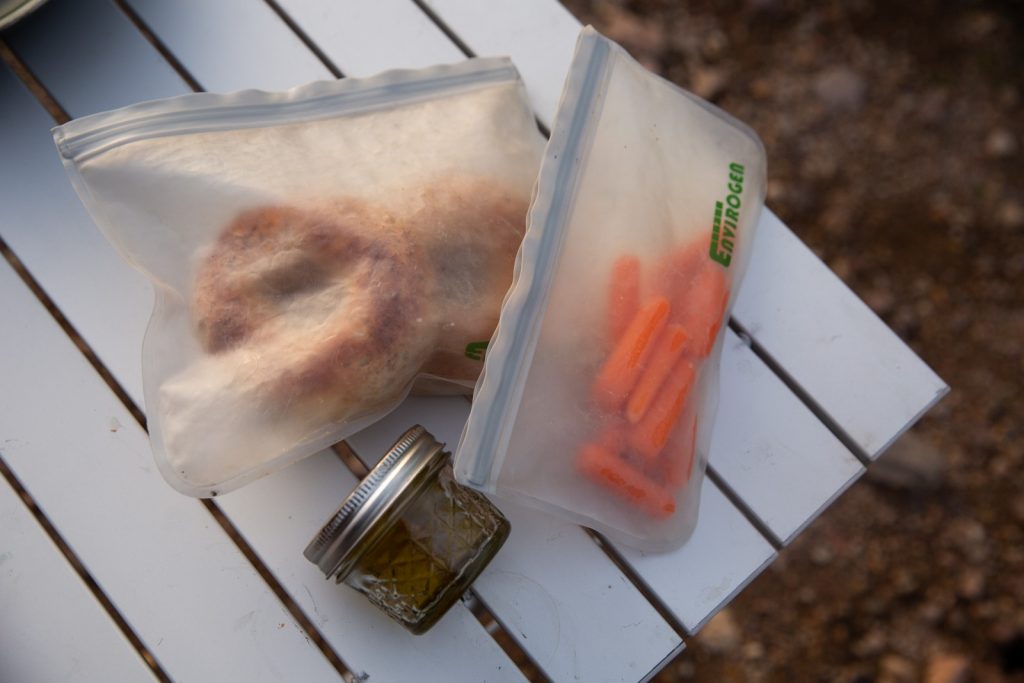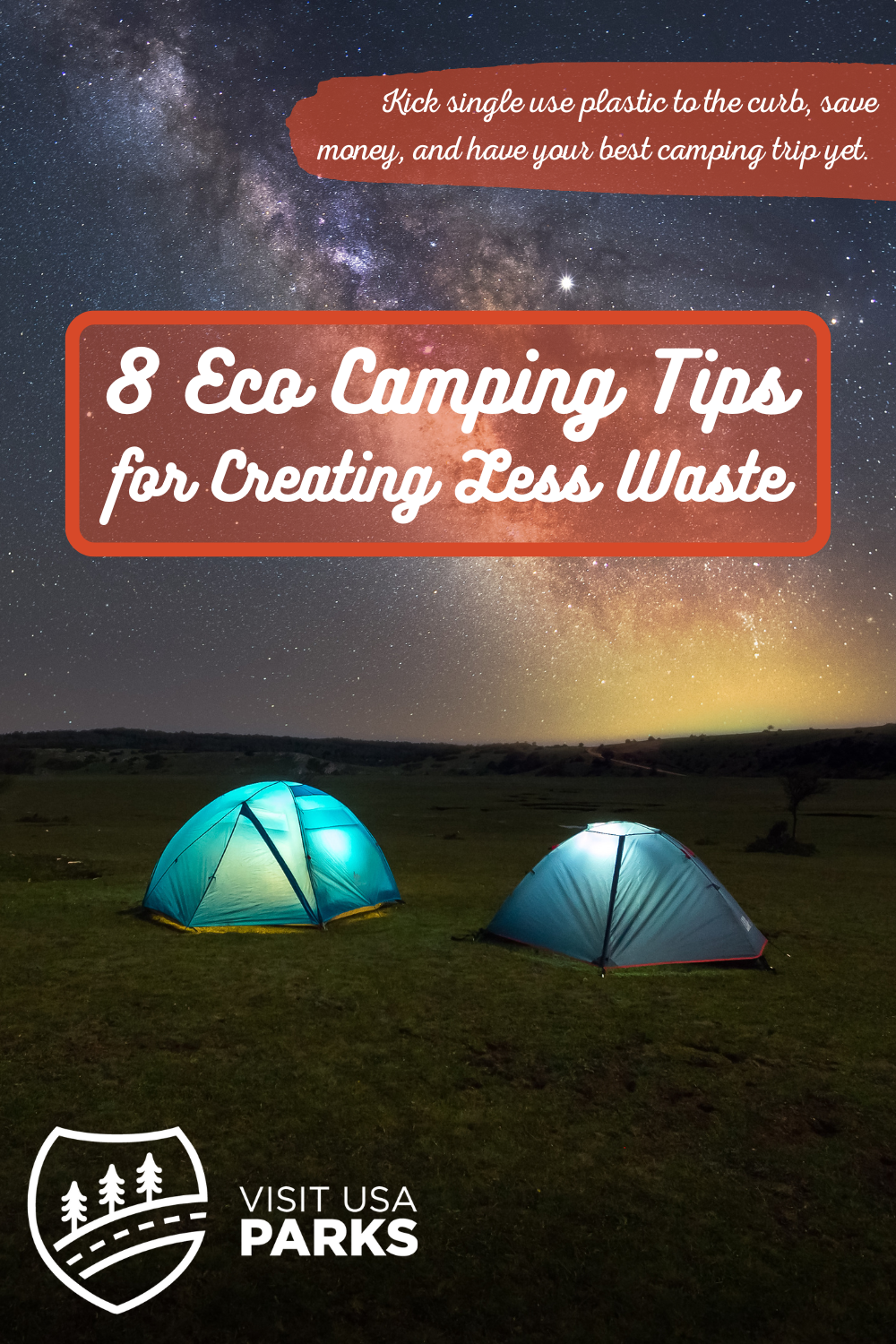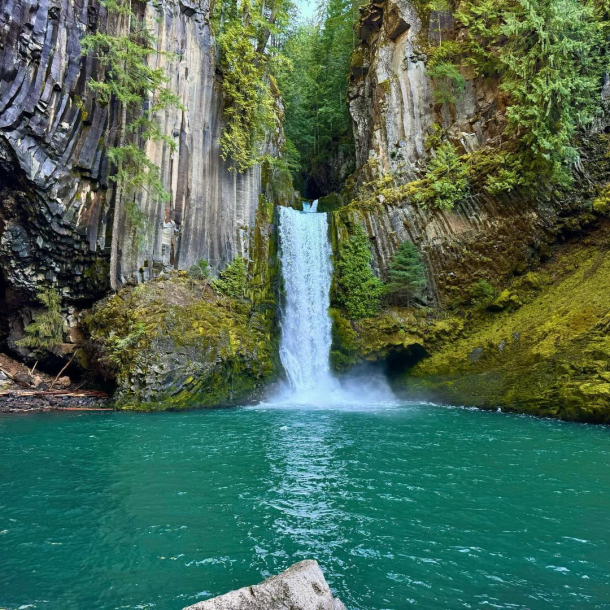Travel Tips
8 Eco Camping Tips for Creating Less Waste
“Go to the Trader Joe’s snack aisle and grab one of everything.”
“Just starting packing up the house. You never know what we’ll need out there.”
“We’re bringing 5 cases of water bottles and 3 cases of Gatorade. For one night.”
“Ok go to Walmart and get plastic forks. They only come in a pack of 500? Perfect.”
I get it. No one wants to bail because their sleeping bag wasn’t warm enough or they didn’t bring enough food. However, this amount of over-preparation can be very wasteful. I’ve put together a list of eco camping tips that will help you prepare without filling an entire trash bag after one weekend of camping.
1. Bring a refillable water container
Rather than buying cases of plastic water bottles, bring a large refillable water container. Water containers can be filled at many gas stations or corner stores like Walgreens. Fill a 4-gallon container on your way out of town and use that to refill your smaller water bottles as needed. This way you also have a water reserve for when you’re cooking or washing dishes.
Pro tip:
Buy one that has a spigot, then set the container on the edge of a table or the back of a car, and open the spigot for an easy way to wash your hands.
2. Ditch the Disposables
Disposable dishware and silverware are so last decade. Instead, bring some old, lightweight bowls and plates that your kids use for cereal. You can always find cheap dishes and silverware at a local thrift store, or buy camping-specific dinnerware, though it’s not necessary.
Pro tip:
Cleaning dishes outside doesn’t have to be complicated. If there’s only two of you, try using water and a scraper. Rinse the plate with water, scrape it clean with the rubber side of the scraper, then use a rag to finish cleaning and drying. You can do a more detailed wash when you get back home. If there are more people with a lot of dishes, bring a bucket or use a large kitchen pot, fill it with water, and scrub the dishes with biodegradable soap. Easy!
3. Use kitchen rags in lieu of paper towels
Rather than using disposable paper towels for cleaning, drying, and everything else, bring a couple old kitchen rags instead. In many ways, the rags work better than paper towels do, and you can easily throw them in the washer when you back home.
Pro tip:
If you don’t have any kitchen rags that you want to take camping, use an old t-shirt that you’ve been meaning to donate.
4. Rent gear or buy second-hand
If you plan on camping only a few times a year, it’s best to rent the gear that you need, such as tents, sleeping bags, camp chairs, etc. This way you’ll always have updated, quality gear and you’ll be paying a small price for it. If you want to own the gear, buy second-hand. Try a local outdoor consignment store or thrift store. If you have the money and want to buy new, then buy quality products. Do your research and find products that will last long. It’s wasteful to buy a cheap tent off Amazon and then replace it in two years when it doesn’t hold up anymore.
Pro tip:
Look through REI’s used gear section or, if you live close to one, find out when they’re having their next “garage sale.”
5. Use frozen water bottles in the cooler
Instead of buying a bag of ice that comes wrapped in plastic every time you use your cooler, try filling water bottles with water and freezing them. A few years ago I bought two big, plastic water bottles at a gas station and I’ve used those same bottles for my cooler ever since. They take up less space than a bag of ice and they don’t turn my cooler into a small pond when they melt. Return them to your freezer when you’re home and take them out when you need your cooler next.
Pro tip:
Keep your cooler in a shady spot at the campsite to avoid melting your ice too quickly.
6. Dutch Oven > Tin Foil
Trust me, cooking in a dutch oven over the fire is way better than in tin foil. Plus, you can do so much more with it. I often see people using the tin foil for dessert over the fire at the end of the night, which can easily be made in the dutch oven.
Instead of buying a bag of ice that comes wrapped in plastic every time you use your cooler, try filling water bottles with water and freezing them. A few years ago I bought two big, plastic water bottles at a gas station and I’ve used those same bottles for my cooler ever since. They take up less space than a bag of ice and they don’t turn my cooler into a small pond when they melt. Return them to your freezer when you’re home and take them out when you need your cooler next.
Pro tip:
Bring brownie mix and bake brownies in the cast iron over the fire. You will become campfire royalty.
7. Bring containers for leftovers
Whether you’re cooking for two people or eight people, it’s hard to know how much will be enough, so sometimes you end up making too much. When you’re camping and that happens, you can either play the game of spoons (where you all go in a circle with a spoon and eat until the dinner is gone and you have stomach aches) or you just throw it away. However, if you think ahead and bring containers for potential leftovers no one has to eat until they can’t move and then you have lunch for the next day!
Pro tip:
Don’t play spoons. Bring the containers.
8. use silicon snack bags instead of plastic bags
First of all, they’re adorable. Secondly, they’re durable and easy to clean. I recommend Stasher reusable silicon bags, which come in sandwich size and snack size. The bags are obviously pricier than buying a pack of plastic bags, but they’re a good investment. Just buy one and try it out, then save up for more.
Pro tip:
Eco Camping = Planning Ahead
It might be hard to make all of these eco camping changes at once, so try sticking with a couple for now and see how it goes after a few trips. The key is to give yourself enough time to plan ahead. If you wait until the night before your trip to start planning, you’ll go with the most convenient options and end up with lots of waste. Happy eco camping!
Interested in going on a road trip, but don’t know where to start? Check out one of our itineraries!

